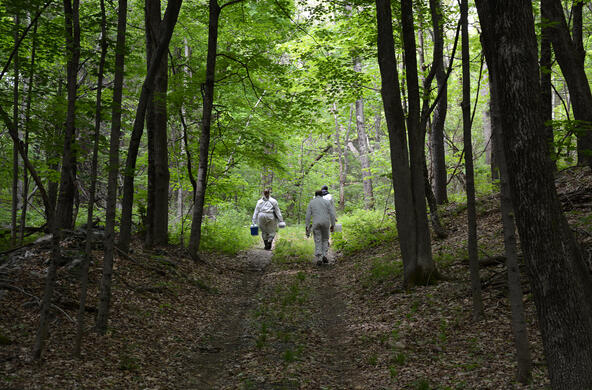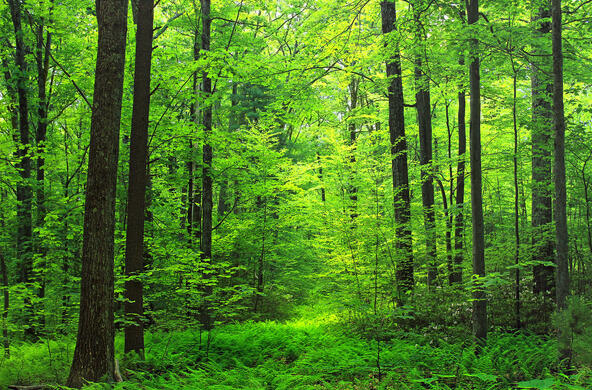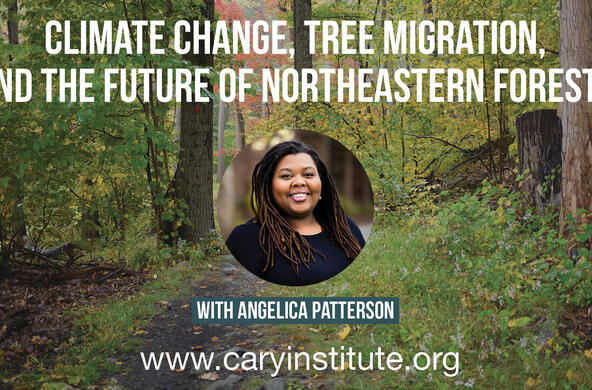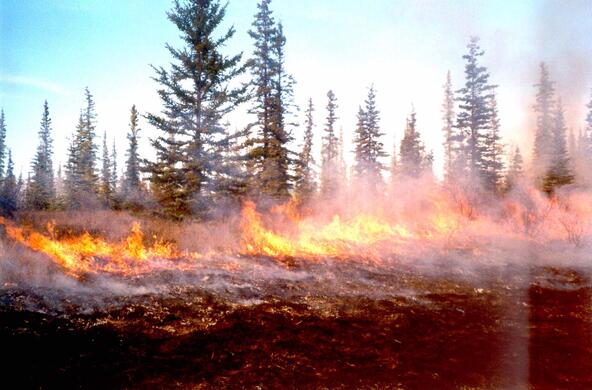Trees are climate allies – how can we make them resilient?
Forests are a top defense against climate change. Trees convert climate-warming greenhouse gases into wood, acting as important carbon sinks. They can also reduce air pollution and mitigate flooding.
But development, logging, and agriculture are putting pressure on forests globally – at the very time that we need them the most. How do we ensure forests are resilient, now and in the future? We are working to answer this question.
Safeguarding forests and the benefits they provide relies on management based on ecological science.
Modeling how northern forests are changing. Using data from the US Forest Service’s Forest Inventory and Analysis Program, we are studying trees’ ability to adapt to climate conditions in the northeastern US. By knowing how trees are changing today, we can devise management strategies that will promote healthy forests in the future.
Maximizing the carbon storage potential of trees in the tropics. Tropical forests contain large stocks of carbon that are being released due to high rates of land-conversion. We are studying disturbed forests in Panama to understand how reforestation efforts can be tailored to maximize carbon storage and help combat climate change.
Studying effects of warmer winters and reduced snow on northern forests. When leaves drop and cold settles in, forests stay busy underground. As much as half of forest nutrient cycling and soil-atmosphere gas exchange occurs during winter. We are revealing how mild winters alter these processes – and what this means for plants and trees the following growing season.
Analyzing true costs of biomass energy. Carbon dioxide stored by trees is released when we burn their wood. Cary scientists have found that biomass energy plans citing wood pellets as carbon-neutral underestimate carbon emissions that result from processing, shipping, and burning wood. Cutting mature forests for fuel also threatens biodiversity. We need living trees and energy that is not carbon-based to win the fight against climate change.
Cary is bringing science to bear on global energy policy, and weighing in on the carbon-neutrality of biomass energy.
Each year, some 7 million tons of wood pellets are shipped from the US to Europe, where biomass fuels have been declared carbon-neutral with respect to fulfilling the commitments of the Paris Climate Accord.
Unless we can guarantee forest regrowth to carbon parity, the recent science indicates that production of wood pellets for fuel is likely to put more CO2 in the atmosphere and maintain less biodiversity on the land during the next several decades.
Bill Schlesinger




